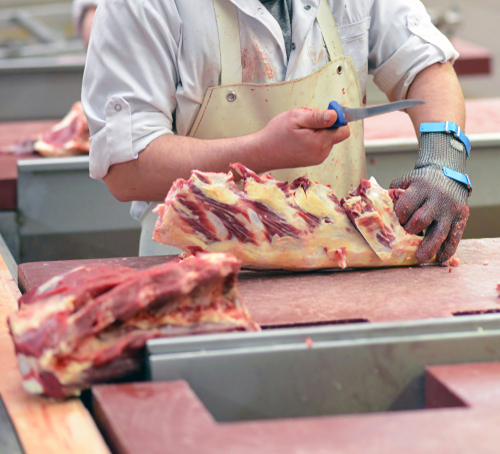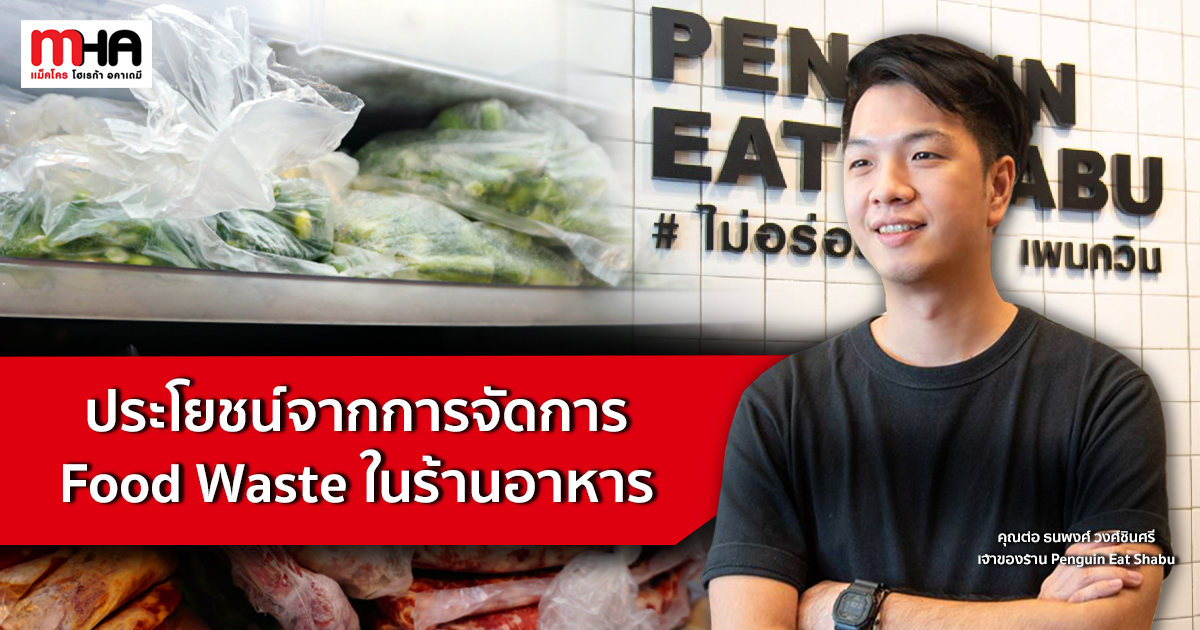Oct 01, 2020

Everyone probably knows that food waste, in addition to affecting the overall environment and economy, also increases restaurant cost.
There's a lot of opportunities for restaurants to create food waste such as during ingredient procurement, storage, trimming and preparation. If you don't know the sources and causes, you won't be able to plan any waste control at all. Normally, there are five main causes in restaurants as follows:
- Overbuying

Waste caused by overbuying ingredients often happens due to lack of purchase planning. Rather than projecting ingredient usage in advance based on sales information, the restaurant instead buys ingredients based on its familiarity or buys extra just in case sales will be impacted if the restaurant bought too little. Sometimes the restaurant also buys in large quantities to have discounts but forgets that, regardless of how much cheaper the ingredients become they will still become waste if they expire, which increases costs.
This problem can be solved by projecting sales in advance through POS data and regular inventory inspection. Doing so allows the restaurant to know which ingredients are left and which are about to run out and enables the restaurant to make appropriate purchase plans.
Another method that allows us to know how much of ingredients we have to order for each occasion is par level inventory calculation or calculating the amount of ingredients used in each purchase cycle. This depends on three important factors, namely, average amount of ingredients used each week, which can be determined through weekly inventory inspection, ingredient delivery cycle for each week, and extra ingredients for just in case you don't have enough (safety stock).
- Spoilage
There are many causes behind ingredient spoilage such as receiving poor quality ingredients, lack of inspection, improper storage, and lack of prior ingredient usage planning leading to expiration. Even though many restaurants try to pay attention to buying cheap ingredients, they end up creating waste from ineffective ingredient storage.

When you receive your ingredients, you should sort them for appropriate storage according to their types immediately and not simply stuff them inside your refrigerator. Putting purchased vegetables in appropriate plastic boxes instead of stuffing plastic bags inside the refrigerator can reduce the chances of bruising your vegetables.
FIFO (First-in-First-out) – Applying this principle in ingredient management can help ensure that ingredients first ordered are used first. However, you have to clearly designate the areas where newer and older ingredients are stored in order to avoid mixing them up. Using colored stickers or date labels on the ingredients you receive every day can help prevent confusion in employees.
Furthermore, regularly checking the refrigerator to ensure that it can provide the required temperature range can help extend the life of ingredients and prevent premature spoilage.
- Over-trimming
Over-trimming of ingredients might not sound like it should impact waste much. In reality, however, it is something nearly every restaurant neglects, making them lose way more ingredients than they should, even though they're neither expired nor spoiled. One reason for this is that restaurants fail to specify how each ingredient should be trimmed, which causes each kitchen employee to trim ingredients based on their feelings.
Yield Calculation (calculating the amount of ingredients that can be used) – Having a standard and specifying how to trim each ingredient can help kitchen employees trim ingredients in line with the restaurant's standards, thereby helping to prevent unnecessary waste.

Another effective way to reduce waste that can also help reduce the workload of kitchen employees is buying pre-trimmed ingredients from a supplier. Although costs might rise somewhat, the time and labor costs saved might make it overall more worthwhile.
Finally, you can turn leftover items or trimmed ingredients such as vegetable, meat and bone scraps into new menu items to boost restaurant sales and reduce ingredient waste. For example, a sushi restaurant can turn salmon scraps with bones into a salmon Thai salad or turn leftover salmon heads into boiled fish heads in soy sauce, etc.
Learn how to properly store each type of ingredient and maintain the freshness of ingredients and extend usage life for greater restaurant profits in the "Professional Food Storage Techniques" free online course taught by Chef Willment Leong
4. Overproduction
4. Overproduction
Another cause contributing to food waste is estimating sales incorrectly, which leads to preparing more ingredients than required. Rather than handling order by order like customers want, large quantities are prepared ahead of time with the idea that doing everything all at once will save more cost and time. Buffet restaurants, in particular, have to prepare foods before customers arrive, making their costs immediately higher as their incomes are less than projections.

Analyzing the sales statistics for each menu item on a regular daily basis can help chefs prepare foods appropriately to meet demands. Regardless of how low the cost for each plate of food is, the restaurant ends up having to offer cheap sales promotions without making a profit due to the fear of food expiration if customers don't eat or order it.
5. Over-portioning
5. Over-portioning
Serving large portions to customers is not always a good thing. That's because, in addition to the possibility of customers not finishing their meals or eating more than they should to the point that they can't order other things to eat, the serving cost immediately increases, and the food will also be wasted pointlessly.
This happens when the restaurant fails to specify portion control from the beginning, which makes it so that the same menu item might not be served in equal amounts each time.

In addition to portion control having the potential to reduce waste, the serving staff also plays an important role in reducing waste. This is because they are the ones who can observe and identify the dishes that customers frequently fail to finish or ingredients that customers frequently avoid eating. The staff can then tell the chef to make recipe or quantity changes as appropriate.
Regardless of the cause of food waste, the main factor that can help the restaurant reduce food waste is employees, whether in ordering ingredients, storing them, preparations, seasoning or serving. Therefore, it is important to train employees to recognize the importance of reducing food waste as well as the methods on how to reduce food waste, and they should be monitored regularly. These are the most important things for effectively reducing food waste.
Click to read the "Zero Food Waste Program: Reduce Cost, Increase Profits; Food Waste Reduction Secrets Revealed"
- Benefits of managing restaurant food waste.
You can follow the Zero Food Waste Program: Reduce Cost, Increase Profits; Food Waste Reduction Secrets Revealed through Makro HoReCa Academy's Facebook page and on the website to learn more know-how and ideas for restaurant owners to use in improving and strengthening business and surviving the current situation while also learning about how to reduce food waste to cut cost and increase profits through online content about food waste and food waste reduction methods.
